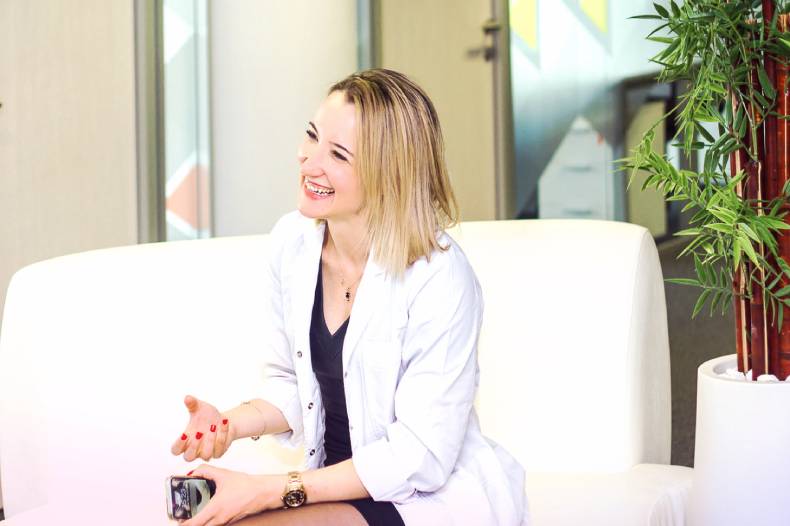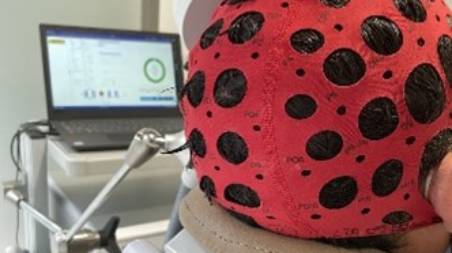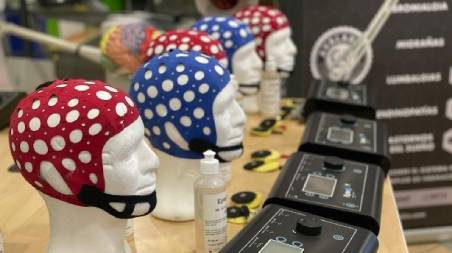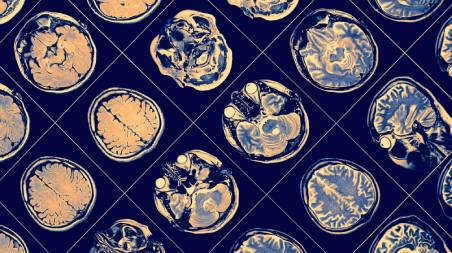Lifestyle Center

Brain Neuromodulation Unit
Innovative, non-invasive, painless, safe treatments. Committed to your health.
Our new Brain Neuromodulation Unit provides advanced treatments to significantly improve the quality of life for patients with a range of conditions. Thanks to non-invasive neuromodulation, we can regulate the nervous system by modifying brain activity and promoting neuroplasticity, which produces both functional and anatomical changes.
Featured technology
- Transcranial Magnetic Stimulation (TMS)

Transcranial Magnetic Stimulation (TMS)
Non-invasive, painless, safe brain neuromodulation technique that modifies brain activity using magnetic fields, generating an electric field that impacts the targeted brain area's activity. It causes depolarisation of neurons. This technique can therefore modify brain activity, making it useful for diagnosing and treating a range of symptoms. It is comfortable and straightforward to apply. It is performed transcranially, i.e. on the patient's scalp using a coil, which is what produces the magnetic field. This magnetic field generates a secondary current, selectively modulating brain activity without causing pain to the patient. This technique can be applied as a single stimulus, in pairs of stimuli separated by intervals, or in trains of repeated stimuli at various frequencies.
- Transcranial Direct Current Stimulation (tDCS)

Transcranial Direct Current Stimulation (tDCS)
Innovative brain neuromodulation technique that is non-invasive, painless and safe, applying a low-intensity galvanic current to the scalp (transcranially) to modify the activity of specific areas of the brain. Applying tDCS involves placing electrodes on a specific area of the skull, depending on which cortical areas need modification, transmitting the current to the patient's brain.
- Virtual reality

Virtual reality
Virtual reality is an innovative technology that creates realistic simulated three-dimensional environments which users can explore and interact with through special devices such as virtual reality headsets. These virtual environments enable patients to perform specific movements and tasks simulating daily life activities, which is crucial for effective emotional, cognitive and motor rehabilitation.
Featured treatments

Treating chronic pain
Neuromodulation is particularly effective in treating fibromyalgia, neuropathic pain, and other chronic pain conditions that resist conventional treatments. Advanced techniques such as transcranial magnetic stimulation (TMS) or transcranial direct current stimulation (tDCS) allow us to reduce pain and improve patient functionality.

Managing neurological disorders
We offer innovative solutions for managing conditions such as attention deficits and other cognitive disorders such as fatigue, motor disorders, depression or executive dysfunction in Parkinson's disease, motor or language deficits in stroke, sleep disorders, and migraine. Neuromodulation using non-invasive, safe, painless techniques modulates neuronal activity and offers more precise, effective control of such disorders.

Treating depression and other psychiatric disorders
Neuromodulation offers new hope for patients who have not adequately responded to traditional treatments for depressive syndromes, anxiety, burnout or obsessive-compulsive disorder (OCD) and others. We use a range of combined non-invasive techniques to modify brain function without drugs, such as transcranial magnetic stimulation (TMS), transcranial direct current stimulation (tDCS), and virtual reality. When combined with physiotherapy, nutrition, rehabilitation, speech therapy, neuropsychology and pharmacological treatments, these techniques offer superior results in addressing many conditions.

Neurological rehabilitation and sport
Neuromodulation plays a crucial role in rehabilitating patients with neurological injuries, helping to improve mobility and motor function. Our unit is the first to specialise in rehabilitation, multidisciplinary treatment and sport. We use all available tools to personalise and optimise treatment protocols, including neuroimaging and neurophysiological techniques. Combining a range of clinical, neurophysiological, neuromodulation, pharmacological, rehabilitation and training techniques has proven effective, not only allowing personalisation in line with individual needs, but also adjusting treatment doses, reducing adverse effects, and obtaining greater benefits.



